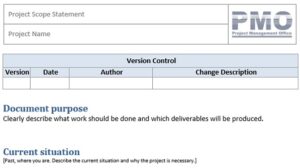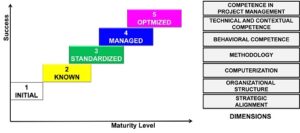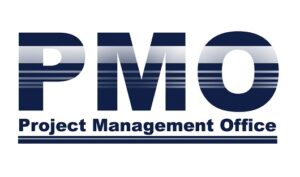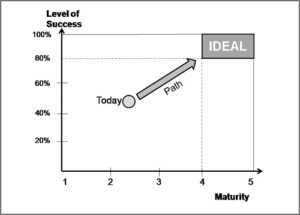Introduction to Project Management Maturity Model is the first of a SERIES of ARTICLES [1] on Maturity of Organizations in Project Management
This article provides a general introduction to the topic of measuring project management (PM) maturity, the benefits that this measurement can provide, and identifies some of the models that are being used for that purpose. Subsequent articles in this series with cover these topics:
- A better explanation of Prado-Project Management Maturity Model
- Further analysis of PM maturity research results in Brazil,
- Some real world Brazilian case studies (Brazil Central Bank, Building Construction Industry, Government, others),
- Results of some Brazilian graduate survey studies (MBA, MSc, PhD) related to PM maturity, and
- Articles by others reporting on experience in applying PMI´s OPM3, the UK´s P3M3© and PRINCE2 Maturity Model (P2MM), IPMA-Prisma and perhaps others.
Introduction to Maturity in Project Management
Purpose and Benefits of Measuring PM Maturity in Organizations[2]
Measuring the maturity of an enterprise regarding its program/project management success capabilities has become an important subject. Hundreds of “Project Management Maturity Models” have been developed and used in the past two decades with the objective of measuring the level of project management maturity within all types of enterprises and for most of the many categories of projects. These models range from simple to very complex. The most widely used of these models have been developed primarily for large, complex organizations, and these have become excellent sources of business for specialized consultants. The purposes of these models are to:
- identify where improvements are required,
- improve both the selection and the execution of the enterprise´s programs and projects, and
- benchmark one enterprise or one division of an enterprise against its competitors or counterparts with regard to the specific categories of programs and projects of importance to that enterprise.
Project Management Maturity Can Be Viewed from Three Perspectives
These three perspectives are:
- Operations versus project management: How well the project management discipline is integrated with operations management. Indicators of relative maturity from this perspective can be subjectively determined by evaluating these factors, among others:
- Rank and responsibilities of Project Sponsors,
- PMO placements and definitions of their responsibilities, and
- Degree of conflict between Project and Functional Managers.
- Strategic enterprise management versus project and program portfolio management: Are all programs and projects within the enterprise truly aligned with the current, approved strategic objectives? Are strategic transformational programs being managed as effectively as the commercial or delivery programs and projects within the organization?
- PM Maturity of an organizational unit versus maturity within project categories: Many project management maturity models are applied (incorrectly, in our view) to measure the PM success capabilities of a company or division as a whole when they should be more appropriately applied to measure the organization´s maturity with regard to managing (selecting, planning, scheduling, monitoring, and controlling) each of the specific categories of projects that exist within the organization…. An organization can be very mature and successful in selecting and managing a specific category of projects and programs, especially for commercial or delivery projects, but at the same time it can be very immature in managing its strategic transformational programs. An organization can be very mature and successful in managing IT software projects while simultaneously being very immature and unsuccessful in managing the design and construction of a new office building or process plant.
Importance of and Benefits from Measuring Project, Program, and Portfolio Management (PPPM) Capability Maturity
This maturity assessment identifies the need for and opportunities to improve these capabilities within the organization for each project category, and also enables world-wide comparison and benchmarking with similar organizations and for similar project categories. Research now shows conclusively that increasing an enterprise´s PPPM maturity produces greater success in selecting, planning and executing its projects, and this in turn produces greater success of the enterprise.
Project Management Maturity Models
o Identify where Project Management improvements are required.
o Enable benchmarking corporate PM performance against others,
including competitors.
o Give clear indications of strengths and weaknesses.
o Can lead to significant competitive advantages if follow-up
improvements are made.
Properly assessing the organization´s PPPM management maturity enables developing a realistic plan of action to improve these capabilities and to increase your rate of successful projects and your overall competitiveness.
Which PM Maturity Model Should You Use?
There are many PM maturity models to choose from, including these widely used models:
- PMI-OPM3
- Kerzner-PMMM
- IPMA-Delta
- PRINCE2 Maturity Models
- Prado-PMMM
- CBP: Center for Business Practices: http://www.pmsolutions.com/resources/view/what-is-the-project-management-maturity-model/
- Berkeley Project Management Process Maturity Model.
- SEI: Capability Maturity Model Integration: http://cmmiinstitute.com/
The following text describes the five first models.
Since its release in 2003, the Organizational Project Management Maturity Model (OPM3®) has been used by organizations around the world to minimize risk, drive the right projects, and align investments to accelerate organizational success.
Organizations turn to OPM3® because it helps them bridge the gap between strategy and individual projects, and provides a way to advance strategic interests through the application of project management principles and practices.
Organizational Project Management Maturity Model (OPM3®) – Third Edition is the result of years of development and continues to build on the foundation formed by the input of hundreds of project management practitioners and consultants from countries around the world.
This newest edition not only delivers the latest best practices, it also encompasses multiple expansions and changes, including:
OPM3 – MATURITY EVALUATION:
Dimensions
Through a questionnaire, it is possible to assess how mature the organization is on the Best Practices. This questionnaire applies to the following dimensions:
- Dimension “Stage of Processes Improvement”:
- Standardization
- Measurement
- Control
- Continuous Improvement
- Dimension “Domains”:
- Projects
- Programs
- Portfolios
- Dimension ” Progression of Incremental Capabilities”
- Dimension “Linkage to the Standards Processes of PM of PMI” (Portfolios, Programs and Projects)
Assessment: The Questionnaire
The questionnaire to assess the maturity level of an organization consists of 120 questions (Version 2), with answers like “Yes” or “No”, as follows:
- Questions related to processes described in the manual Standard for Project Management (PMBOK);
- Questions related to the processes described in the manual Standard for Program Management;
- Questions related to the processes described in the manual Standard for Portfolio Management.
Each question is subdivided into 4 parts to measure:
- Standardization
- Measurement
- Control
- Continuous Improvement
The Evaluation Results
The questionnaire is filled out using an Interactive Computerized System available on a CD. The program evaluates the answers and provides the results, as the following example (see Figure 1):
- Overall Evaluation: The level of organizational maturity is 30%
- Evaluation by Domain:
- The level of maturity in projects is: 50%
- The level of maturity in programs is: 25%
- The level of maturity portfolios is: 15%
- Evaluation by Stages:
- Standardization: Maturity = 60%
- Measurement: Maturity = 15%
- Control: Maturity = 10%
- Continuous Improvement: Maturity = 5%
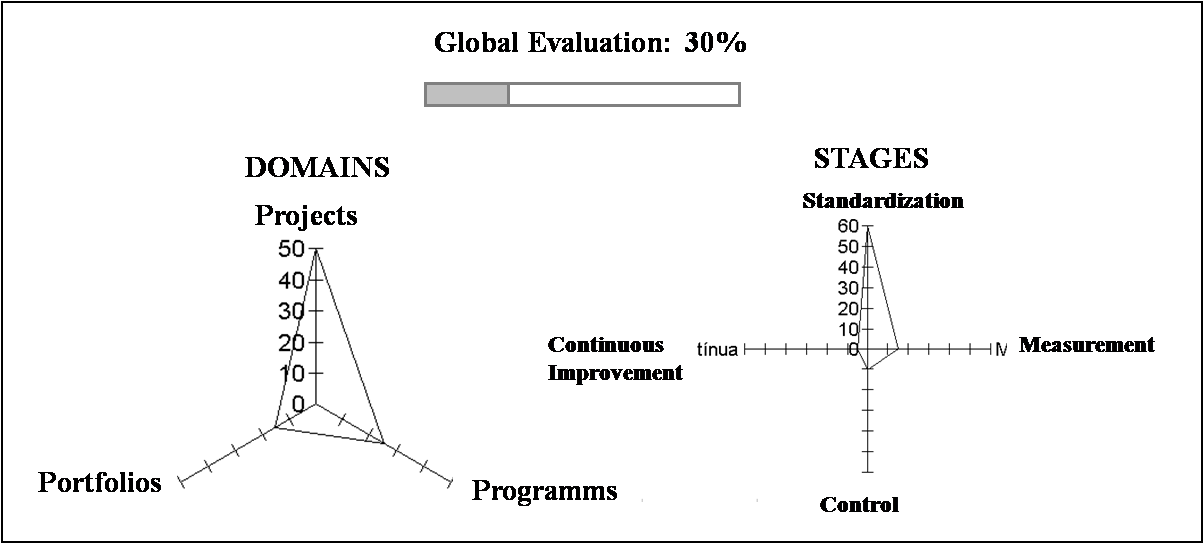
Figure 1: OPM3: Example of Presentation of Evaluation Results (partial).
Improvement Plan
The program that is available on CD provides, in addition to assessment results, an Improvement Plan that addresses the best practices that the organization has demonstrated gaps. Note that, to OPM3, a Best Practice is split into Capabilities and the program also identifies which capabilities the organization needs to improve. There are approximately 600 Best Practices in Database Best Practice and each consists of two or more capabilities. In addition, each capability is associated with a form of measurement of results that would be produced if the organization owned it.
Implementation Plan
After identifying the Improvement Plan, it is the organization responsibility to create its Implementation Plan. The Interactive Computerized System, available on CD, provides guidance to trace the Implementation Plan.
KERZNER – PMMM
Kerzner’s model[3], released in 1998, contains 183 questions. It allows you to measure how the organization is positioned at six levels, but does not provide a final note, that is, provides only the percentage of achievement of each level. The levels are (Figure 2):
- Level 0 – Home (starting level)
- Level 1 – Common language
- Level 2 – Common processes
- Level 3 – Methodology single
- Level 4 – Benchmarking
- Level 5 – Continuous Improvement

Figure 2. The Kerzner Project Management Maturity Model.
A more detailed description of the levels is presented below:
Level 1 – Common Language
- Sporadic use of project management.
- Small focus of interest in the discipline.
- No investment in training in project management.
Level 2 – Common Process
- Management support across the organization.
- Development of a curriculum management.
Level 3 – Unique Methodology
- Integrated Processes.
- Cultural and managerial support.
- Financial benefits arising from management training.
Level 4 – Benchmarking
- Qualitative and quantitative analysis and assessment practices.
- Project Management Office established
Level 5 – Continuous Improvement
- Archive of lessons learned. Knowledge transfer between teams.
- Established a monitoring program.
- Established the use of continuous strategic planning.
IPMA – Delta Model
(from the official site of IPMA http://ipma.ch/certification/certify-organisations/deltacompetence-classes/)
IPMA Delta’s model, released in 2011, integrates state-of-the-art know-how covering a 360° perspective of organisational competence in project management. It uses the IPMA Competence Baseline to assess the competence of selected individuals (module I) and the IPMA Project Excellence Model to assess the PM competence and results in selected projects and programmes (module P). Module O is used to assess the Organisational Competence in Managing Projects based on the IPMA Organisational Competence Baseline.
All modules are cross-referenced and interlinked (Figure 3).
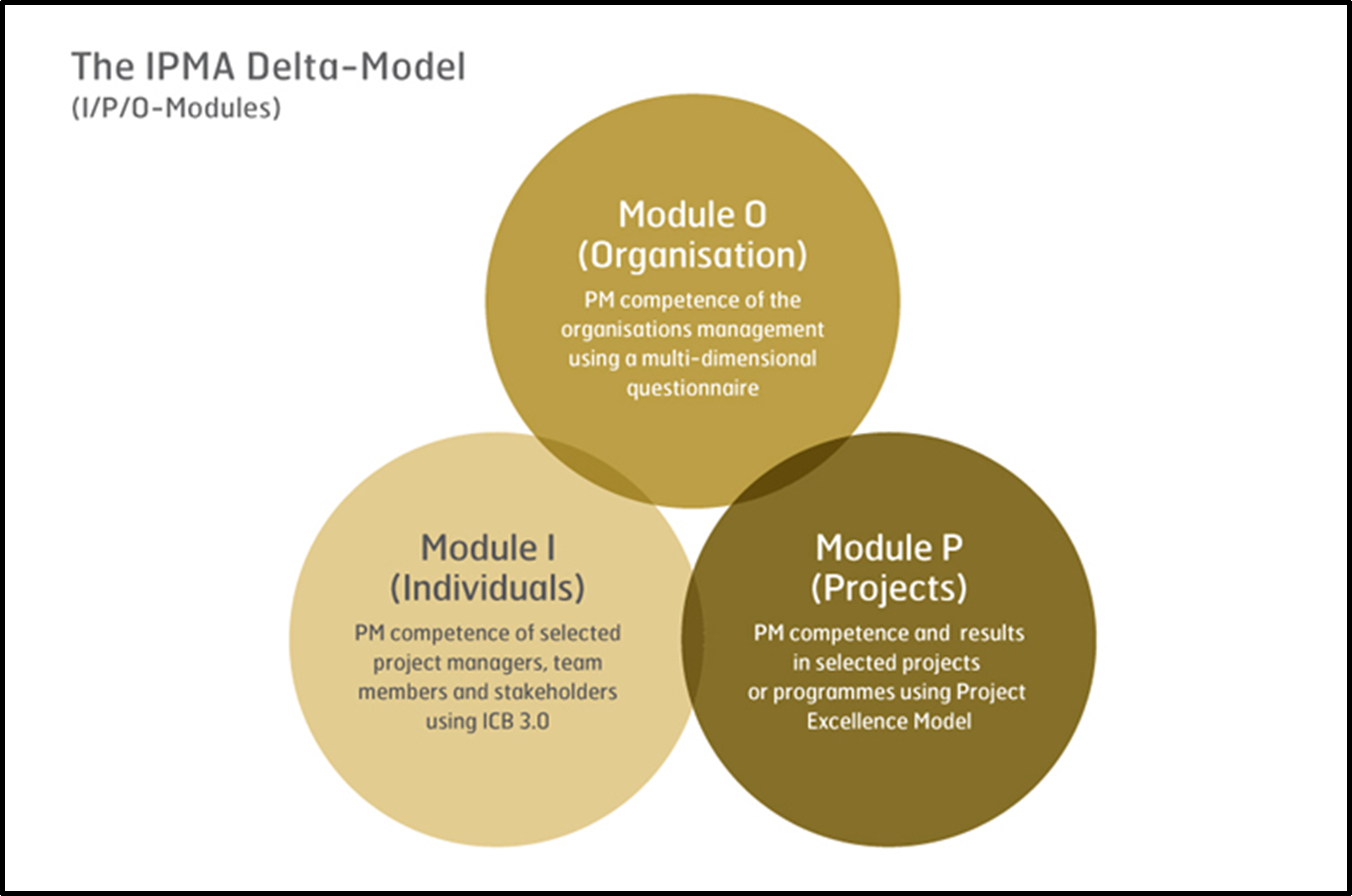
Figure 3. The IPMA Delta Project Management Maturity Model.
IPMA Delta offers five competence classes: initial, defined, standardised, managed, optimising. These competence classes describe an organisation´s current project management competence.
Class 1: Initial
The achievements of project management are at a personal level. There are individuals who perform well, but the performance is coincidental. The organization has no formal PM standards, structures and processes in place.
Class 2: Defined
There are partially defined P standards, structures and processes in place, which are partially applied in the organization.
Class 3: Standardized
There are fully defined PM standards, structures and processes in place, which are mostly applied throughout the organization.
Class 4: Managed
There are fully defined PM standards, structures and processes in place, which are fully applied throughout the organization, which the management actively controls.
Class 5: Managed
There are fully defined PM standards, structures and processes in place, which are fully applied throughout the organization, which the management actively controls and continuously develops.
IPMA offers the best way to identify possible development of an organisation´s project management competence. Since organisations determine the competence class they want to reach, IPMA Delta shows how to develop from one class to the next, from one dimension to the next, for the organisational Delta Effect.
PRINCE2 Maturity Models (from the official PRINCE2 web site at http://www.prince2.com/prince2-maturity-models):
PRINCE2 Maturity Model (P2MM)
1. Carried out by a PRINCE2 Registered Consultant (P2RC)
2. Enables organisations to gauge, by assessment, their maturity in the use of PRINCE2
- Understand key practices
- Identify key practices that need to be embedded to achieve the next level
- Consists of 16 `key process area´ with a set of key practices for each
3. Provide a focus for improvement
4. Provide verified evidence of maturity at three levels
- Initial – projects are recognized and managed as such
- Repeatable – each project is run with its own processes
- Defined – Centrally controlled project process exists
Portfolio, Programme and Project Management Maturity Model (P3M3©)
1. Carried out by a Programme and Project Management Registered Consultant (PPMRC)
2. The overarching P3M3 model is made up of three sub-models
- PfM3 – Portfolio Management Maturity Model
- PgM3 – Programme Management Maturity Model
- PjM3 – Project Management Maturity Model
3. Consists of five maturity levels, seven perspectives, attributes and generic attributes
4. External assessment process providing verified evidence of maturity at five levels
- Recognition
- Repeatable
- Defined
- Managed
- Optimized
5. Perspectives considered are:
- Management control
- Benefits Management
- Financial Management
- Risk Management
- Organisational improvement
- Organisation Governance
- Resource Management
6. Developed from the SEI model
Prado PMM Model (Brazil):
(See http://www.maturityresearch.com/ for a detailed description of this model)
This model has been in use in Brazil since 2002 and it is now on 2nd Version. It consists of five levels and enables measurement of maturity across the seven dimensions, as shown in Figure 4. A detailed description of this model is available on the above site in English, Portuguese, and Italian, together with a number of research reports reflecting the maturity results obtained in Brazil from 2005 through 2012.
For more details see www.maturityresearch.com.
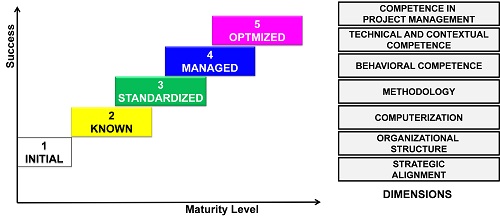
Figure 4. The Prado Project Management Maturity Model.
A detailed description of the levels follows:
- Initial
- Little knowledge of the subject
- Lack of methodology and/or management models
- Use of intuition in management of projects.
- Known – Isolated Initiatives
- Basic knowledge of project management.
- Use of tools (software) to sequence activities.
- Lack of a platform for project management (standardized processes, tools, organizational structure, etc.).
- Isolated initiative to plan and control projects.
- Standardized
- Implementation of a standardized platform for project management:
- Organizational Structure
- Methodology
- Computerization
- Strategic Alignment
- Evolution in competences (project management, technical and behavioral competences).
- Managed
- Improvement of the platform: the standards work
- Anomalies identified and eliminated
- Effective human relationships
- Consolidation of alignment with the organization’s business.
- Optimized
- Optimization of processes, structures and tools
- Optimization of terms, scope, quality and costs
- Technical optimization
The Prado PM Maturity Model can be used without cost by any organization in the world that wants to determine where its PM capabilities require improvement, and how it stands against other similar organizations in several countries. Unlike some PM maturity assessment processes, this model and its assessment process is easy to implement, requiring only 60-90 minutes to complete the questionnaire (depending on the size and complexity of the department or organization).
The core of the survey is a set of 40 questions to evaluate the maturity of a department within an organization. It is important that the questions are answered seriously and with honesty, and with consistent knowledge of the project management methods actually used in the department that is being evaluated.
When using the site www.maturityresearch.com, the results are provided on-line immediately upon completion of the questionnaire, and the organization´s identity is well-protected. Using this maturity model it is possible to assess and benchmark the maturity in the project management capabilities of private companies, not-for-profit, and governmental organizations that are under direct or indirect administration.
The Prado-MMGP has been used in Brazil since 2005 in a country wide research. The overall average Brazilian results obtained in 2012 research are (435 participants):
MATURITY
Brazilian Average Maturity: 2.60 (scale 1 to 5)
RESULTS INDICATORS
Success Index
- Average Total Success: 49,7%
- Average Partial Success: 35,2%
- Average Failure: 15,1%
Average Delay: 28%
Average Cost overrun: 15%
PM maturity in project-driven versus project-dependent enterprises
Project-driven enterprises[4] typically have higher PM maturity levels than project-dependent organizations because the former´s very existence depends of selecting the right projects and executing them effectively and efficiently. Excellent project management is vital to the future of these project-driven enterprises, which include architect/engineer/constructor, general contractor, and specialty contractor firms; information technology and communications firms who sell and install their products and services on a contract basis; and consultants and other professional services firms.
Research shows (see Debourse and Archibald 2011[5]) that most CEOs of those enterprises have held project manager positions during their careers. Project-dependent enterprises (all others who sell their goods and services on the open market and usually depend on projects for new products and services) are often less mature in their project management capabilities because the importance of the PM discipline is not widely recognized by their senior executives[6], and few of their CEOs or other senior executives have managed projects or programs during their careers.
Many executives and management gurus fail to recognize project management as a core competence for essentially all human enterprises
In spite of the widespread global development and use of project, program, and portfolio management (PPPM) concepts, and their importance in achieving significant innovations and in implementing key corporate strategies[7], Nieto-Rodriguez[8] reports that this competence is ignored by senior executives in project-dependent enterprises, by business management gurus, and by most top MBA programs, and is discounted as a topic by the finest business publications.
We believe that every organization that has important projects and programs under way will derive substantial benefits from initiating an effort to measure their project management maturity, benchmark themselves against their competitors and others, and determine where to initiate improvements in these important capabilities. This maturity assessment effort will be useful to communicate more effectively with their senior corporate executives and others about the importance of PPPM as a core competence.
[1] The Project Management Maturity series of articles by Russell Archibald & Prof Darci Prado is based on their extensive research on this topic in Brazil, the United States and other countries. Russ is one of the pioneers in the project management field and the originator of the Archibald Project Categorization Model. Darci is the developer of the Prado Project Management Maturity Model which has been successfully implemented by many organizations in Brazil. More about this model and related research can be found at http://www.maturityresearch.com/.
[2] Archibald, Russell D. and Shane Archibald, Leading and Managing Innovation: What Every Executive Team Must Know About Project, Program & Portfolio Management, pp. 87-88, Infinity 2013.
[3] Kerzner, H., Strategic Planning for Project Management Using a Project Management Maturity Model, New York, John Wiley & Sons, 2001, p.1-40.
[4] Archibald, Russell D. and Shane Archibald, Leading and Managing Innovation: What Every Executive Team Must Know About Project, Program & Portfolio Management, pp. 20-21, Infinity 2013.
[5] Debourse, Jean-Pierre and Russell D. Archibald, Project Managers as Senior Executives, Project Management Institute, 2011.
[6] Ibid.
[7] Archibald, Russell D., “Leading and Managing Innovation,” presented at the Project Zone Germany Congress, 18-19 March 2013, Frankfurt. http://russarchibald.com/recent-papers-presentations/innovation-projec-manage/innovation-pmifc/
[8] Nieto-Rodriguez, Antonio, “Evidence of the Neglect of Project Management by Senior Executives.” PM World Journal, Vol. II, Issue II – February 2013 www.pmworldjournal.net
This article has been published by PM World Journal at http://pmworldjournal.net/
About the Authors

Russell D. Archibald
San Miguel de Allende, Mexico
![]()
![]()
Russell D. Archibald: PhD (Hon) ESC-Lille (Fr), MSc (U of Texas) & BS (U of Missouri) Mechanical Engineering, PMP, Fellow PMI and Honorary Fellow APM/IPMA (member of the Board of IPMA/INTERNET 1974-83), held engineering and executive positions in aerospace, petroleum, telecommunications, and automotive industries in the USA, France, Mexico and Venezuela (1948-1982). Russ also had 9 years of active duty as a pilot officer with the U.S. Army Air Corps (1943-46) and as a Senior Pilot and Project Engineer with the U. S. Air Force (1951-58.) Since 1982 he has consulted to companies, agencies and development banks in 16 countries on 4 continents, and has taught project management principles and practices to thousands of managers and specialists around the world. He is co-author (with Shane Archibald) of Leading and Managing Innovation: What Every Executive Team Must Know About Project, Program, and Portfolio Management (2013); author of Managing High-Technology Programs and Projects (3rd Edition 2003), also published in Russian, Italian, and Chinese; other books (in English, Italian, Japanese, and Hungarian); and many papers on project management. Web-site: http://russarchibald.com E-mail: russell_archibald@yahoo.com

Darci Prado, PhD
Minas Gerais, Brazil
![]()
Darci Prado is a consultant and partner of INDG in Brazil. He is an engineer, with graduate studies in Economical Engineering at UCMG and PhD in Project Management from UNICAMP, Brazil. He has worked for IBM for 25 years and with UFMG Engineering School for 32 years. He holds the IPMA Level B Certification. He was one of the founders of Minas Gerais State and Parana State PMI chapters, and he was member of Board Directors of Minas Gerais State PMI chapter during 1998-2002 and member of the Consulting Board during 2003-2009. He was also the president of IPMA Minas Gerais State chapter during 2006-2008. He is conducting a Project Management maturity research in Brazil, Italy, Spain and Portugal together with Russell Archibald. He is author of nine books on project management and is also author of a methodology, a software application, and a maturity model for project management. Darci can be contacted at darciprado@uol.com.br

